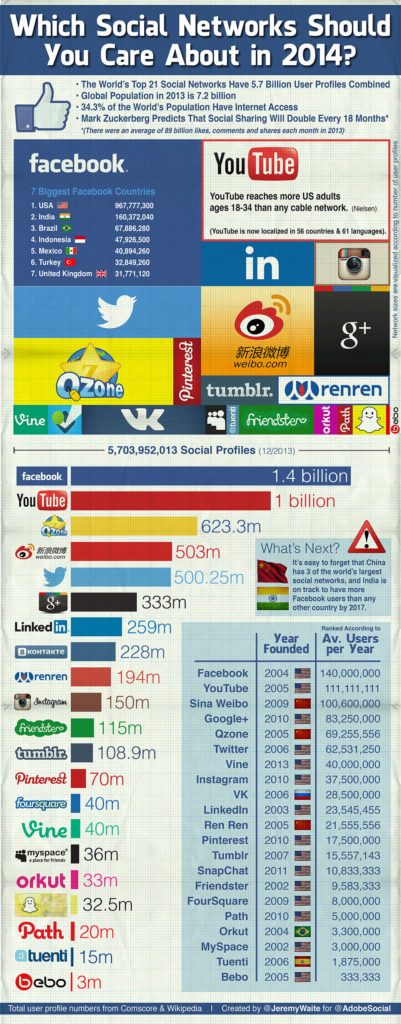Social Networks in 2014 and Why Numbers Aren’t Everything

It’s the 3rd of January 2014, and already we are inundated with waves of infographics spreading across social media. The one below created by Adobe is fairly simplistic in nature (and a lot of the numbers can be called into question) but it does offer a number of interesting topics for debate amongst social media professionals.
One such question: which sources (e.g. ComScore, Nielsen, Global Web Index) are most reliable when it comes to positioning Google+ in terms of its userbase and activity? Considering the integration of Google+ comments within YouTube and it’s growing userbase, increased integration with other Google services & efforts by the company to encourage big brands to use the social network, it’s only natural to assume it will become a much larger part of marketing efforts this year.
The main question it of course looks to tackle is which social networks should marketers be looking to focus on? It’s a broad question, and one that can’t be answered in a couple of sentences or with a few numbers. However, a few variables to consider besides the size of the social network from a brand perspective: target audience location, userbase activity, geolocation, brand penetration potential, brand assets (Instagram or Vine?), content creation regularity (dedicated social media and creative teams)
Numbers aside, 2014 is a big year for social media in general. Facebook will continue to grapple with it’s declining teenage userbase and will be hoping Instagram messenger can stem the wave of young deserters. Snapchat’s position has been put in question with its recent security concerns and Twitter will be hoping to finally produce an advertising model for marketers that is both attractive and effective. The trend however is clear, the pervasiveness of technology (mobile, high-speed internet) is allowing for higher volumes of even richer media to be shared across social networks such as Pinterest, Snapchat, Instagram & Vine.


